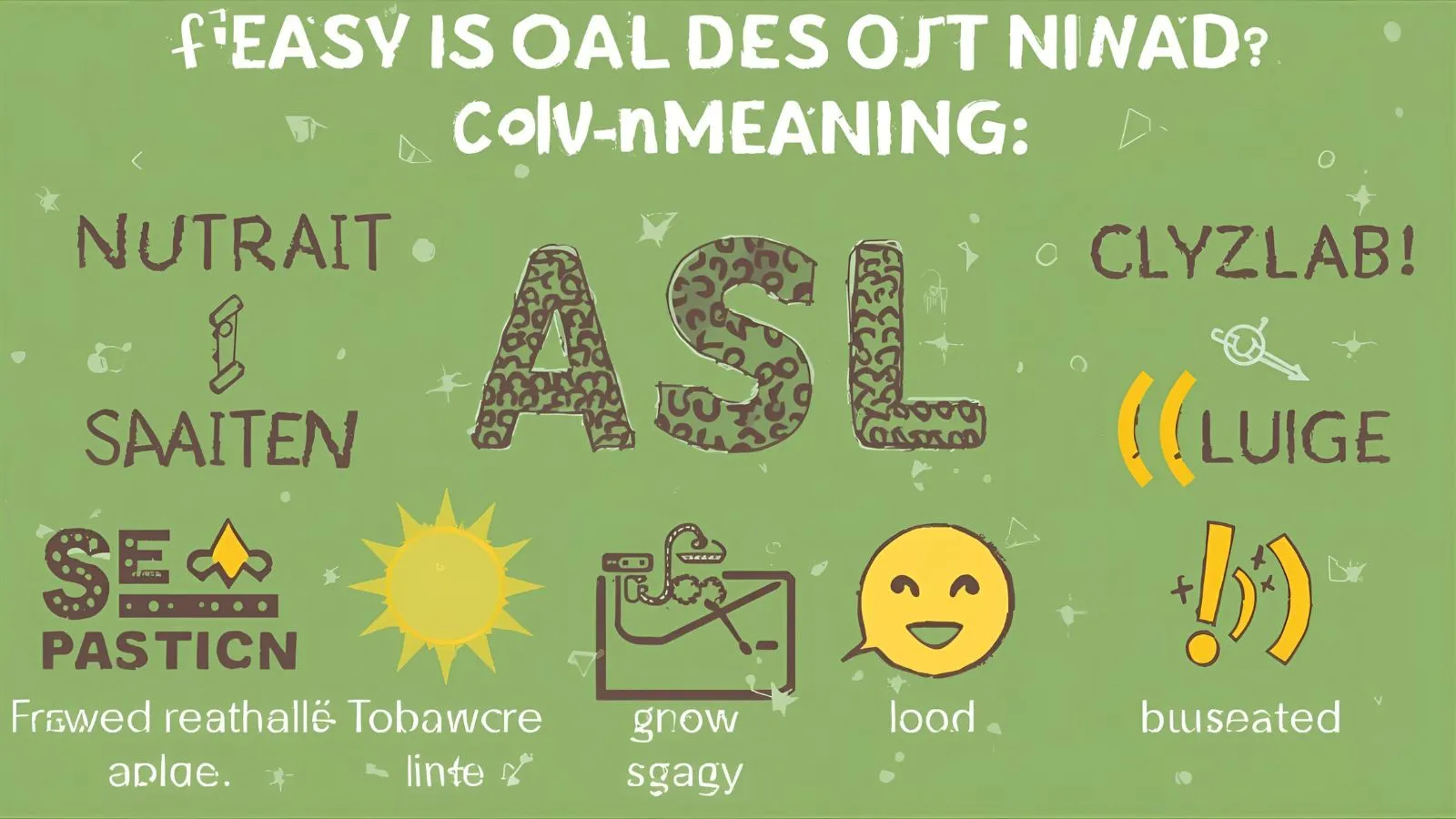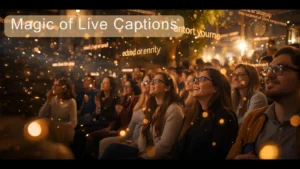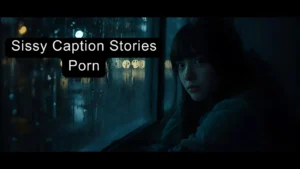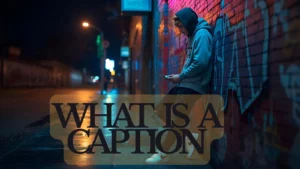In the ever-evolving world of online communication, abbreviations and slang dominate digital conversations. Among them, “ASL” is one of the most versatile and frequently misunderstood acronyms. In 2025, its meaning has expanded beyond its original internet usage, shaping how people interact across texts, chats, and social media platforms.
This article provides the definitive guide to ASL in slang, including its origins, evolving definitions, modern-day relevance, professional and polite alternatives, and examples. By the end, you’ll not only understand what ASL means but also know exactly how to use it—or avoid it—depending on the situation.
What Does “ASL” Mean in Slang?
In slang, ASL stands for “Age, Sex, Location.” It emerged in the early chatroom culture of the 1990s and early 2000s, particularly on platforms like AOL Instant Messenger, Yahoo Chat, and MSN Messenger. Users would type “ASL?” to quickly get to know someone in an anonymous environment.
For example:
- User A: hey
- User B: hi
- User A: asl?
This shorthand eliminated the need for long introductions, cutting straight to basic identity markers. However, in 2025, ASL has evolved and now holds multiple meanings across different communities.
Modern Meanings of ASL (2025 Update)
- Age, Sex, Location – The traditional and still widely understood meaning.
- As Hell – A more modern usage, common among Gen Z and Gen Alpha, where “ASL” is used to intensify statements.
- Example: “I’m tired asl.” (Meaning: I’m very tired.)
- Example: “I’m tired asl.” (Meaning: I’m very tired.)
- American Sign Language – A formal acronym that often overlaps in online spaces, though not slang.
- Alternative Slang Language – In some 2025 online subcultures, ASL is humorously rebranded as shorthand for creative or ironic expressions.
The context of the conversation determines which meaning applies. For instance, a professional LinkedIn post using “ASL” will likely mean American Sign Language, while a TikTok comment saying “That’s funny asl” means “as hell.”
Why Understanding ASL Matters in 2025
Language is dynamic, and misinterpreting abbreviations can cause confusion or even embarrassment. Here’s why ASL matters:
- Generational Divide: Older users may still interpret ASL as “Age, Sex, Location,” while younger users default to “as hell.”
- Professional Communication: Using slang like ASL in workplace chats may seem unprofessional unless contextually appropriate.
- Cultural Sensitivity: Because ASL also refers to American Sign Language, misuse can appear dismissive or disrespectful.
- SEO & Digital Content: If you’re creating content for global audiences, understanding trending slang ensures your message resonates.
Polite, Professional, and Casual Alternatives to “ASL”
Sometimes, typing ASL may feel too casual, ambiguous, or inappropriate. In 2025, many users prefer clear, modern alternatives that avoid miscommunication. Below are 10 superior alternatives, each explained with examples and nuances of tone.
1. “Where are you from?”
- Tone: Neutral, polite.
- Best for: Casual conversations, meeting new people online.
- Example: Instead of typing “asl?”, you can ask, “Nice to meet you! Where are you from?”
This avoids the outdated “ASL” shorthand while inviting a genuine exchange.
2. “What’s your background?”
- Tone: Semi-formal, respectful.
- Best for: Networking, professional contexts.
- Example: “I’d love to know more about your background—what do you do and where are you based?”
This phrasing makes the other person feel valued rather than interrogated.
3. “How old are you, if you don’t mind me asking?”
- Tone: Polite, cautious.
- Best for: When age is relevant (e.g., study groups, online games).
- Example: “Hey, just curious—how old are you, if it’s okay to ask?”
Adding a softener like “if you don’t mind” makes the question less intrusive.
4. “What part of the world are you in?”
- Tone: Friendly, open.
- Best for: International conversations or group chats.
- Example: “This community is so global! What part of the world are you in?”
This phrasing feels inclusive and conversational.
5. “Tell me a bit about yourself.”
- Tone: Warm, open-ended.
- Best for: Building rapport beyond small talk.
- Example: “Instead of the usual ‘ASL,’ I’d love to hear more—tell me a bit about yourself.”
This shifts the focus from check-box answers to storytelling.
6. “What do you do?”
- Tone: Professional or casual depending on context.
- Best for: Networking events, LinkedIn chats, professional groups.
- Example: “Hey, great to connect! What do you do?”
A modern, professional-friendly substitute for “sex” in the outdated ASL acronym.
7. “Where are you based right now?”
- Tone: Neutral, respectful.
- Best for: Digital nomads, students, or remote workers.
- Example: “Since so many people travel these days, where are you based right now?”
This respects the global lifestyle trends of 2025.
8. “What’s your story?”
- Tone: Warm, engaging.
- Best for: Friendships, deeper conversations.
- Example: “Forget ASL—what’s your story? How did you get into gaming?”
This encourages connection instead of superficial details.
9. “What brings you here?”
- Tone: Welcoming, polite.
- Best for: Online groups, communities, events.
- Example: “Welcome to the forum! What brings you here?”
This makes the other person feel like part of the group.
10. “Who are you beyond the screen?”
- Tone: Poetic, reflective.
- Best for: Meaningful or philosophical chats.
- Example: “We spend so much time online—who are you beyond the screen?”
This transforms a casual question into a thought-provoking one.
Nuances of Tone: Choosing the Right Alternative
- Formal settings (work, academic): Use “Where are you based?” or “What do you do?”
- Friendly chats: Use “Where are you from?” or “Tell me a bit about yourself.”
- Deeper connections: Use “What’s your story?” or “Who are you beyond the screen?”
- Avoiding awkwardness: Add softeners like “if you don’t mind” or “just curious.”
Understanding tone ensures you don’t come across as rude or overly intrusive.
Why You Should Avoid Using ASL in 2025
Although still recognized, ASL as slang is outdated and often misinterpreted. Here’s why avoiding it is smart:
- Confusion with American Sign Language.
- Privacy concerns—younger generations are wary of sharing age, sex, and location with strangers.
- Professionalism—in career-related spaces, “ASL?” can feel immature.
- Cultural Relevance—slang evolves quickly, and ASL belongs more to early internet history.
Instead, using clear and modern alternatives shows adaptability and respect.
The Evolution of Digital Slang in 2025
Slang reflects cultural shifts, technology, and generational identity. In 2025:
- AI-driven platforms are creating new shorthand (e.g., abbreviations in voice-to-text).
- Memetic language spreads faster via TikTok, YouTube Shorts, and VR spaces.
- Privacy-conscious Gen Alpha prefers slang that feels playful rather than invasive.
- Cross-cultural adoption means that a single slang term may have five different meanings depending on country.
Understanding these dynamics ensures you stay ahead in digital communication.
Key Takeaways
- ASL originally meant “Age, Sex, Location,” but in 2025 it often means “as hell” or “American Sign Language.”
- Context is everything. Misinterpretation can cause confusion or offense.
- Use modern alternatives like “Where are you from?” or “Tell me a bit about yourself” for clarity and professionalism.
- Slang is not static—it evolves with culture, technology, and generational shifts.
By choosing the right words, you can communicate clearly, respectfully, and effectively in any digital space.










